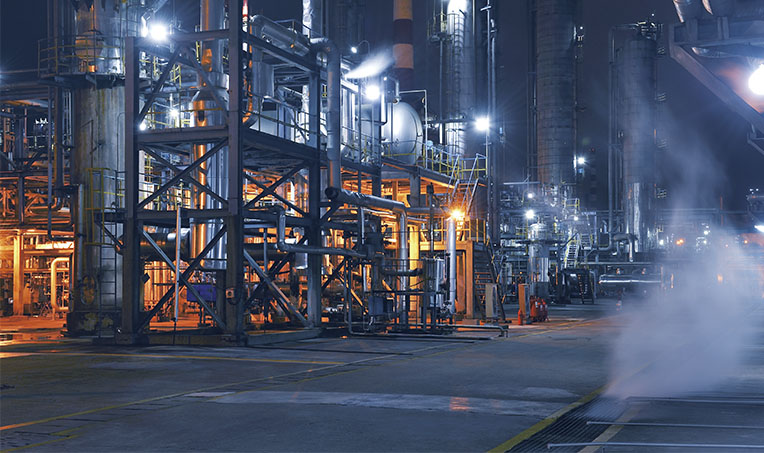Albatros Énergie Du Mali (AEM), case study by investment director Ashwin West, on the landmark IPP

Lessons from a landmark IPP
Ashwin West, investment director, African Infrastructure Investment Managers, tells us what it took to get Mali's first independent power project to cross the finish line.
At the end of October, the Albatross Energy Mali IPP Project, a 90MW thermal power plant in Kayes, Mali, announced the successful start of operations - three days ahead of schedule - after 16 months of construction.
Comprising six medium-speed, highly-efficient 15MW Caterpillar engines, the plant will produce a guaranteed minimum of 578GWh of electricity per year, which will he sold to the national utility, Energie du Mali, through a 20-year power-purchase agreement.
AEM, which is the West African nation's first IPP to feed into the national grid, represents a landmark project in the Malian power sector and the start of a new era.
Mali is among the world's 25 poorest countries and only 25.6 percent of its 17.6 million people have access to electricity, with the level falling to 15 percent in rural areas. Installed electricity generating capacity stands at just 352MW. However, less capacity is actually available for dispatch. This significant greenfield thermal power project will add at least another quarter to the current base-load potential and create enough power for an estimated 780,000 households.
Before the IPP, EDM met roughly 50 percent of the domestic power consumption in the country with its own installed generation capacity and imports via its transmission network, with the remainder met by distributed and embedded power systems, typically in the form of expensive and inefficient micro-diesel generators. With the economy growing at roughly 45 percent a year over the last decade, driven by rapid growth in urban centres, it became clear the country required additional, reliable and dispatchable power on the grid.
The AEM IPP project started in 2009 when the developers signed a memorandum of understanding with the government of Mali to build a 51MW thermal power station using refurbished engines over a 10-year concession period. The project was met with a number of unforeseeable delays including, towards the end of 2013, an outbreak of the Ebola virus in West Africa. This led to difficulties for AEM with travel in the region heavily restricted.
The country was eventually declared free of Ebola in 2015, and in 2016 the project developers formed the current consortium of like-minded partners to bring the project to financial close.
Counterparty risk
As with most power projects on the continent, the creditworthiness of the offtaker is a key bankability challenge. In this instance, EDM had experienced challenges, such as significant levels of debt and non-cost-reflective tariffs. In order to secure the payment obligations under the PPA, EDM provided a revolving letter of credit equivalent to one month's electricity purchases from the IPP.
In conjunction with the PPA, AEM has signed a concession agreement with the government of Mali that protects AEM's right to build the power station, sell electricity to EDM and collect revenues under the rake-or-pay arrangements
The project's financing activities kicked off at the end of 2013 on the basis of a limited recourse project finance structure, with 70 percent of the funding requirements provided by senior lenders and the remaining 30 percent provided as equity in the form or share capital and shareholder loans.
The West African Development Bank (BOAD) was appointed as mandated lead arranger to the project company. During the course or 2015 and 2016, the Islamic Development Rank, the Islamic Corporation for the Development: of the Private Sector, the OPEC Fund for International Development and the Emerging Africa Infrastructure Fund were also introduced to the project and became part or the senior lending consortium along with BOAD.
The financing structure of this project is unique, due to the types of financing, the mix of lenders and the mix of currencies deployed. The project includes a conventional project-finance facility alongside an Islamic finance facility, with certain lenders providing local currency debt and others providing euro debt.
Community outreach
Beyond reliable and cost-effective power generation, a key focus of the AEM project is the sustainable socio-economic development of its host communities. It aims to achieve this through capacity building, skills transfer and funding of programmes that address local needs.
The town of Kayes is 9.5km from the AEM site, which is located adjacent to the existing Kayes-Medine 225kV substation. The village of Medine is, however, much closer to the site. Given the proximity of the various communities to the site, AEM has worked closely with Medine and other surrounding towns and villages to ensure that meaningful projects are developed during the life of the power station.
Priority projects during the construction phase included the provision of basic healthcare facilities in Medine, which include refurbishing and equipping the local dispensary, provision of a doctor and nurse consultations. In addition, AEM has started on the Clean Drinking Water Programme in Medine with the installation of new boreholes. Lastly, AEM fund raised to provide an ambulance service for the village and surrounding areas.
Paving the way
The Albatros Energy Mali IPP is a landmark project for the country and creates the blueprint for further IPPs, which should benefit from the processes and agreements that were developed for AEM. The project will help EDM to migrate away from expensive emergency power generation facilities, reduce its overall cost or power generation and sustain the economic growth or the country by meeting the unmet power demand.
